Sisyrinchium L. (Iridaceae)
Sisyrinchium is represented by nine (to eleven species) in North Carolina
(the occurrence of two species—S. montanum var. crebrum and S. xerophyllum—
needs further documentation). Only S. dichotomum is listed at the federal
level (Fed E, S2 G2). No species are state-listed.
Federally listed taxon—
Sisyrinchium dichotomum (Fed E, State E | S2 G2)
Habitat. Edges and clearings of upland forests on basic soils where leaf litter is relatively shallow.
Range. Endemic to the Carolinas.
Additional resources. NHP | Recovery plan | 5-year review
Key to Sisyrinchium in North Carolina
Key adapted from Cholewa and Henderson (2002 [FNA]) and Weakley (2008). Photos by Krings, unless indicated otherwise. Line drawings from Britton & Brown (1913), indicated otherwise. Maps courtesy of USDA PLANTS and the North Carolina Natural Heritage Program.
1. Perianth urceolate-campanulate, segments widely flaring; annual; weedy habitats...S. rosulatum 
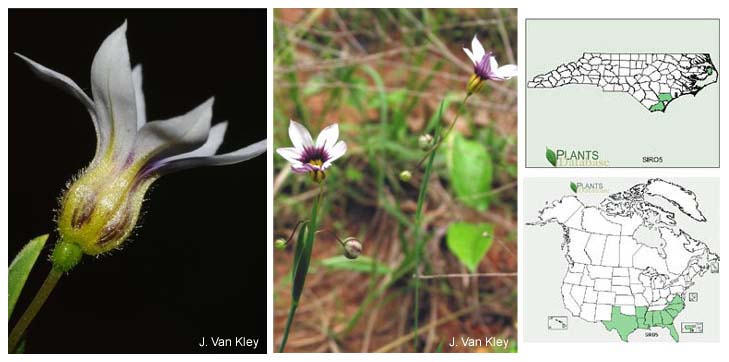 Sisyrinchium rosulatum
Sisyrinchium rosulatum
(uncommon; lawns and roadsides; CP)
1’. Perianth stellate-rotate; perennial; various habitats...2.
2. Inflorescences paired (rarely solitary); outer spathe bract connate 0–1 (–1.5) mm...3.
3. Stems 1.5–3.4 mm wide, flattened, obviously winged; filaments slightly stipitate-glandular basally...S. albidum 
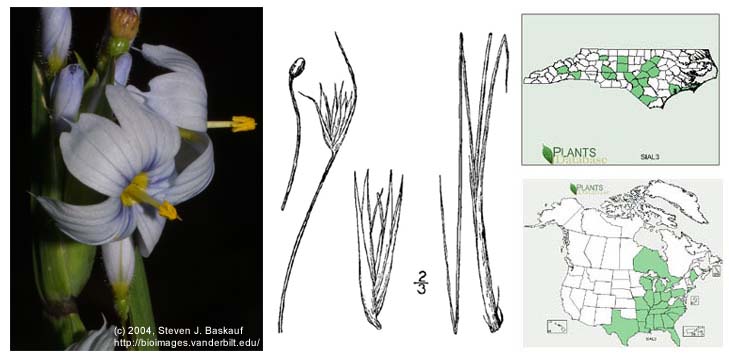

Habit of Sisyrinchium albidum (Photo: Krings)

Stem of Sisyrinchium albidum (Photo: Krings)

Paired inflorescence of Sisyrinchium albidum (Photo: Krings)

Flower of Sisyrinchium albidum from beneath (Photo: Krings)

Flower of Sisyrinchium albidum (Photo: Krings)

Flower of Sisyrinchium albidum (Photo: Krings)

Flower of Sisyrinchium albidum (Photo: Krings)
Sisyrinchium albidum
(uncommon; woodlands, moist sandhills, limestone barrens, savannas?; Mt, Pd, CP)
3’. Stems 0.5–1.0 mm wide, wiry, not winged; filaments glabrous...S. capillare 
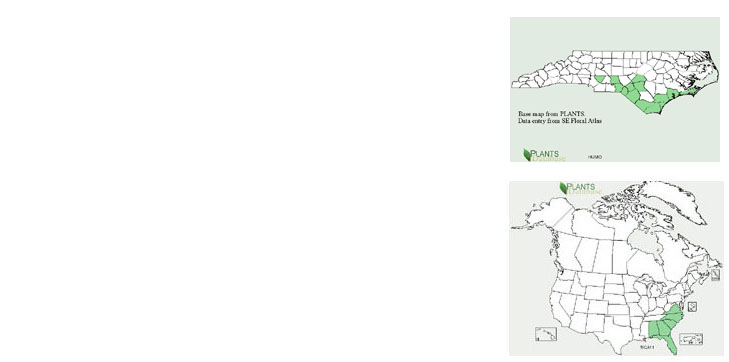 Sisyrinchium capillare
Sisyrinchium capillare
(uncommon; wet pine flatwoods and savannas; CP)
2’. Inflorescences solitary, terminating the stem or branch, not paired; outer spathe bract connate (0.7–) 2–6 mm...4.
4. Stems mostly simple, unbranched, 0.5–1 (–2) mm wide...S. mucronatum 
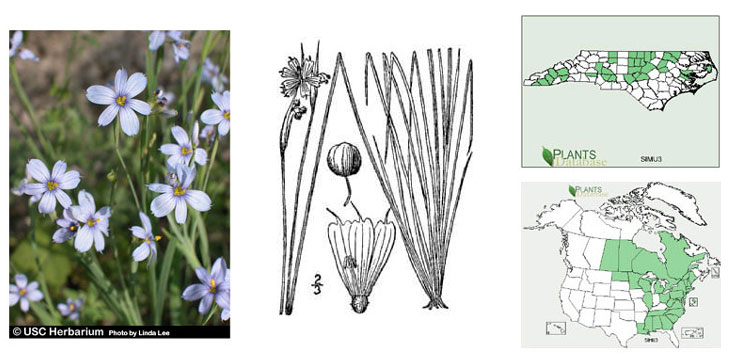

Habit of Sisyrinchium mucronatum (Photo: Krings)

Stem of Sisyrinchium mucronatum (Photo: Krings)

Flowers of Sisyrinchium mucronatum (Photo: Krings)

Flower of Sisyrinchium mucronatum (Photo: Krings)

Flower of Sisyrinchium mucronatum (Photo: Krings)

Flower of Sisyrinchium mucronatum (Photo: Krings)

Flower of Sisyrinchium mucronatum (Photo: Krings)
Sisyrinchium mucronatum
(common; forests, woodlands, fields; Mt, Pd, CP) [
S. montanum var.
crebrum is
distinguished by stems (1.5–) 2–3.7 mm wide, but its occurrence in North Carolina needs further study]
4’. Stems mostly branched, nodes 1–5...5.
5. Stems branching 2–5 times; tepals white, recurved at maturity...S. dichotomum* 
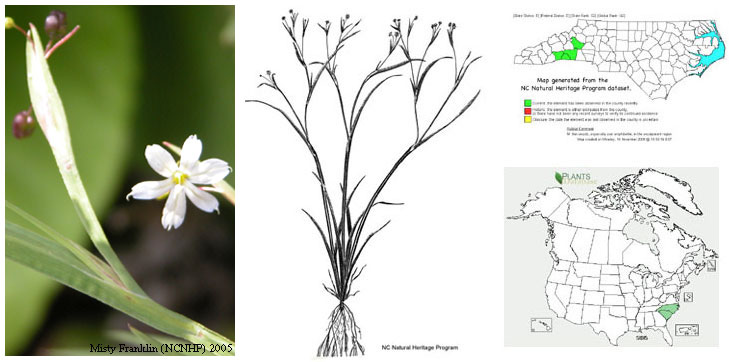

Sisyrinchium dichotomum (Photo: Krings)

Sisyrinchium dichotomum (Photo: Krings)

Sisyrinchium dichotomum (Photo: Krings)

Sisyrinchium dichotomum (Photo: Krings)

Sisyrinchium dichotomum (Photo: Krings)

Sisyrinchium dichotomum (Photo: Krings)

Sisyrinchium dichotomum (Photo: Krings)
Sisyrinchium dichotomum*
(rare [Fed E, S2 G2]; dry to moist woodlands and forests, freq. over mafic substrate at 400–1000 m;
Mt, Pd; summer)
5’. Stems branching 1–3 times; tepals violet to blue (rarely white), not notably recurved at maturity...[S. angustifolium, S. atlanticum, S. fuscatum, S. nashii, S. xerophyllum?] 
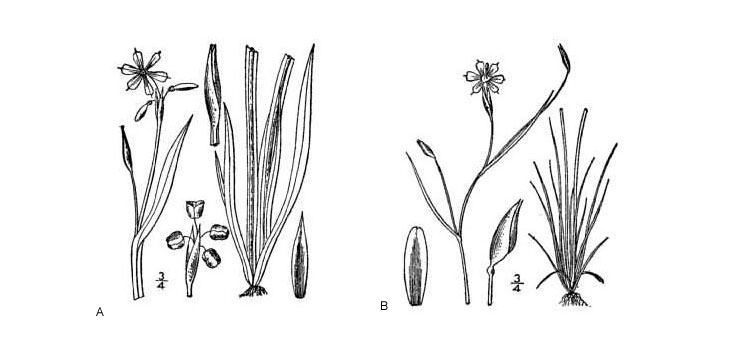
A,
Sisyrinchium angustifolium; B,
S. atlanticum






